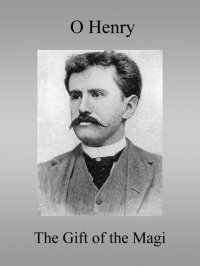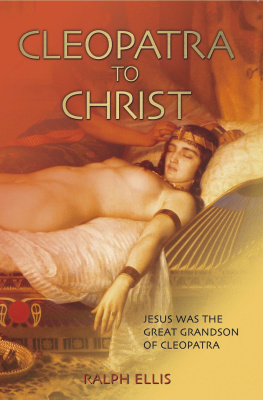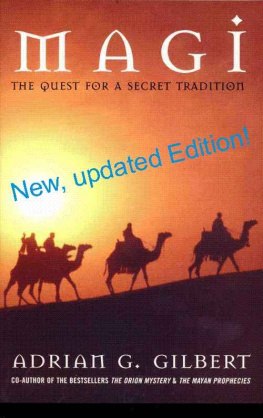Praise for The Magi
Despite being an integral part of the Christmas story, the journey of the Magi in Matthews Gospel raises more questions than it answers. For such a bewildering array of traditions, Eric Vanden Eykels study of the history of interpretation of the Magi story is a reliable and delightful guide to these mysterious strangers who have captivated so many readers.
Brent Landau, senior lecturer in religious studies, University of Texas at Austin, and author of Revelation of the Magi: The Lost Tale of the Wise Mens Journey to Bethlehem
This book is lucidly and wittily written, making it accessible to a broad audience while also offering fascinating new avenues for scholars interested in the Gospel of Matthew and in the Magi. Without falling into the trap of repackaging old claims or pursuing novelty for noveltys sake, Vanden Eykel takes us on a cultural journey, allowing us to better understand the Magi in their world, and therefore, to better understand their place in the story of Jesus.
Shaily Patel, assistant professor of early Christianity, Virginia Tech
Eric Vanden Eykel is clearly a consummate teacherhe excels at making difficult concepts and complicated histories comprehensiblebut he is also an outstanding researcher, raising all the right questions and digging for the best available answers. The Magi is an exceedingly engaging and accessible book that any interested reader will enjoy, but even the specialist will learn something new. Vanden Eykels expertise in apocryphal Christian literature and tradition is evident on every page.
Janet Spittler, associate professor of religious studies, University of Virginia, and coauthor of Reading Christian Apocrypha: Tradition, Interpretation, Practice
Vanden Eykel steps around questions of the historicity of the Magi to focus on tracing their literary journey, from their origin in the Gospel of Matthew through selected ancient and modern transformations and interpretations. With wisdom and whimsy, Vanden Eykel gently guides readers through a detailed scholarly examination of the tale and effectively demonstrates how the brevity of the Magis story invites other writers to supplement and adapt their search for a king for new audiences and new contexts. It is a thoroughly entertaining introduction not only to the story of the Magi but to ways of reading that can be used for all biblical narratives.
Tony Burke, professor of early Christianity, York University, and editor of New Testament Apocrypha: More Noncanonical Scriptures
In this fascinating book, Eric Vanden Eykel examines the figures of the Magi from a variety of angles. Full of pertinent scholarship and historical data, The Magi also includes vivid descriptions of art as well as anecdotal stories that function as relatable teaching tools. Students, scholars, and congregations will appreciate this book and will never see the Magi in the same light after reading it.
Christy Cobb, assistant professor of religion, Wingate University, and author of Slavery, Gender, Truth, and Power in Luke-Acts and Other Ancient Narratives
The Magi
The Magi
Who They Were, How Theyve Been Remembered, and Why They Still Fascinate
Eric Vanden Eykel
Fortress Press
Minneapolis
THE MAGI
Who They Were, How Theyve Been Remembered, and Why They Still Fascinate
Copyright 2022 Fortress Press, an imprint of 1517 Media. All rights reserved. Except for brief quotations in critical articles or reviews, no part of this book may be reproduced in any manner without prior written permission from the publisher. Email or write Permissions, Fortress Press, PO Box 1209, Minneapolis, MN 55440-1209.
Unless otherwise noted, translations of biblical texts and other ancient sources are the authors.
Scripture quotations marked (NRSV) are from the New Revised Standard Version Bible, copyright 1989 National Council of the Churches of Christ in the United States of America. Used by permission. All rights reserved worldwide.
Scripture quotations marked (NIV) are from the Holy Bible, New International Version, NIV. Copyright 1973, 1978, 1984, 2011 by Biblica, Inc. Used by permission of Zondervan. All rights reserved worldwide. www.zondervan.com The NIV and New International Version are trademarks registered in the United States Patent and Trademark Office by Biblica, Inc.
Cover image: Photo Marie-Lan Nguyen / Wikimedia Commons
Cover design: Kristin Miller
Print ISBN: 978-1-5064-7373-4
eBook ISBN: 978-1-5064-7374-1
While the author and 1517 Media have confirmed that all references to website addresses (URLs) were accurate at the time of writing, URLs may have expired or changed since the manuscript was prepared.
Contents
The idea for this book was hatched on a relatively nondescript Monday in March of 2014, in the basement of Memorial Library at Marquette University. I had defended my doctoral dissertation on the Protevangelium of James a few days before, and during a celebratory dinner with my committee, I was asked why I didnt talk about the appearance of the Magi in that text. Theyre not major characters, not by any stretch of the imagination, but they do appear toward the end. So why hadnt I discussed them? The truth is that they didnt really contribute anything to the argument that I was making in the dissertation. With that, my committee agreed. But, I continued, a study of the reception history of the Magi would be a lot of fun. Sounds like you have an idea for a new book! my director exclaimed. Having just finished a dissertation, I replied that perhaps an article was a bit more palatable at this point. He huffed and rolled his eyes sarcastically, and with his characteristic grin, remarked, Well, whatever you do, get started first thing on Monday. But first, be sure to take the weekend to relax!
Out of sheer force of habit, I went to the library the following Monday. Without a dissertation to write, though, I found myself wandering around a bit like... well, a person without a dissertation to write. So I figured why not go ahead and see what sorts of things had been written about the Magi. It couldnt hurt, right? An hour later, I was seated at a large table surrounded by a dozen commentaries on Matthew. As I thumbed through them, I found that they repeated the same talking points about the Magi: who they were, where they were from, why they were interested in Jesus, and so on. Most suggested the same Old Testament passages as possible allusions, and they generally came to the same conclusion about what the larger point of the story was supposed to be. Of course, this wasnt surprising because that is often how it goes with biblical commentaries. A search for journal articles was slightly more fruitful. By far the most creative approaches to the Magi came through a simple internet search. A few online queries returned a handful of websites and self-published books on the Knights Templar and other secret brotherhoods. The claim that the star was a UFO was more common than I expected. My big takeaway from that day was that when you were interested in studying the Magi, you had two options: more of the same or a bit nutty. Works that walked the line between these two poles were apparently few and far between.
Over the next few weeks, I continued to read and think about the Magi. I thought about how Matthew would have wanted his readers to imagine them and why he bothered to even include this odd story in the first place. Because it is an odd story, if youve ever stopped and thought about it. But then, during that research, I found myself thinking about other texts that came after Matthew, texts whose authors had obviously read Matthews story but then retold it and updated a few details in the process. Some of these texts give the Magi a specific homeland. Some give them names. In some of them, the Magi receive gifts back from Mary and Jesus. I also started thinking about the ways in which the Magi had been used for different rhetorical purposes in the first few centuries of early Christianity. How had authors used their story to make and support theological claims? As I continued to explore, I found myself examining a range of other materials, from Renaissance paintings, to early Christian funerary art, to the poetry of T. S. Eliot, and even to the lyrics of a James Taylor song. It finally occurred to me that my director was right: this needs to be a book. So here we are.
Next page








